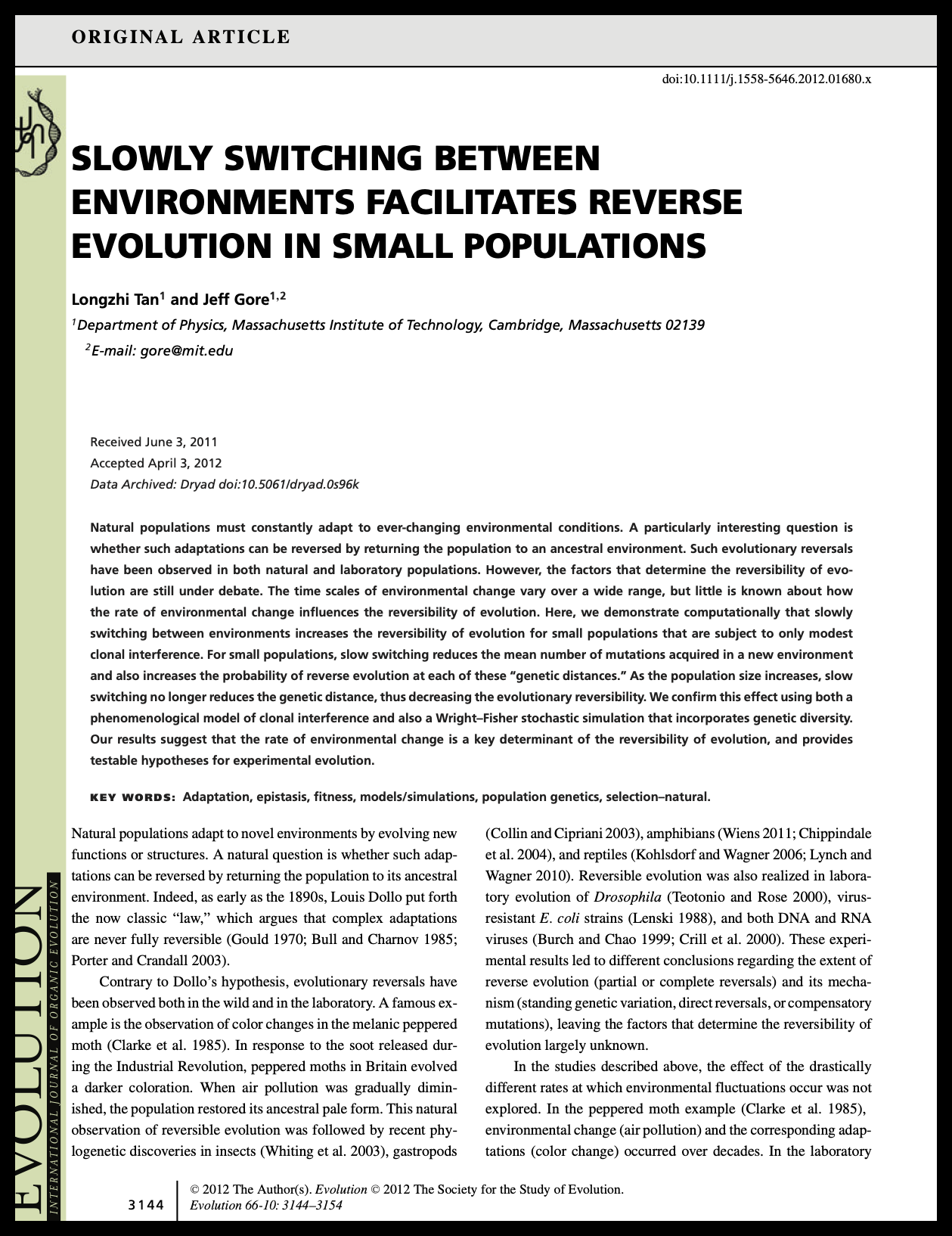Publications
* denotes equal contributions
† denotes co-corresponding authors
2021
(Protocol) Tan, L. (2021). “Determining the 3D genome structure of a single cell with Dip-C.” STAR Protocols, 2(3), 100622
2021
Tan, L.†, Ma, W., Wu, H., Zheng, Y., Xing, D., Chen, R., Li, X., Daley, N., Deisseroth, K. & Xie, X.S.† (2021). “Changes in genome architecture and transcriptional dynamics progress independently of sensory experience during postnatal brain development.” Cell, 184(3), 741–758
2021
Fei, A.*, Wu, W.*, Tan, L.*, Tang, C.*, Hartmann, G., Xu, Z., Huo, X., Talay, M., Wu, W., Yang, C., Riegler, C., Joseph, K., Engert, F., Xie, X.S., Barnea, G., Liberles, S.D., Yang, H., & Li, Q. (2021). “Coordination of two enhancers drives expression of olfactory trace amine-associated receptors.” Nature Communications, 12, 3798
2021
Xing, D.*, Tan, L.*, Chang, C.H., Li, H.†, & Xie, X.S.† (2021). “Accurate SNV detection in single cells by transposon-based whole-genome amplification of complementary strands.” Proceedings of the National Academy of Sciences of the United States of America, 118(8), e2013106118
Reported by GenomeWeb (“PNAS papers on single-cell SNV detection, bone healing-related immune features, more”)
2019
(Prize Essay) Tan, L. (2019). “Three-dimensional genome structure of a single cell.” Science, 366(6468), 964–965
Reported by American Association for the Advancement of Science News (Beckwith, W. “New method illuminates 3D genome structure of a single cell”)
Reported by Science Podcast (Sanders, S. “An interview with the winners of the 2019 Science & SciLifeLab Prize for Young Scientists”)
Reported by SciLifeLab News (Wirtén, N.N. “Design buff Longzhi Tan awarded the Grand Prize for chromatin research”)
Reported by GenomeWeb (“Science studies present method to visualize 3D genome structure, RNAi screens to study insect horns”)
2019
Tan, L.*, Xing, D.*, Daley, N., & Xie, X.S. (2019). “Three-dimensional genome structures of single sensory neurons in mouse visual and olfactory systems.” Nature Structural & Molecular Biology, 26(4), 297–307
Highlighted on the cover
News & Views by Nature Structural & Molecular Biology (Armelin-Correa, L.M. & Malnic, B. “Capturing genome folds in single sensory neurons”)
Technology Feature by Nature (Perkel, J.M. “Chromosomal DNA comes into focus”)
2018
Tan, L.*, Xing, D.*, Chang, C.H., Li, H., & Xie, X.S. (2018). “Three-dimensional genome structures of single diploid human cells.” Science, 361(6405), 924–928
News & Views by Nature Structural & Molecular Biology (Caldwell, B.A. & Bartolomei, M.S. “Mapping the diploid genome, one cell at a time”)
Research Highlights by Nature Methods (Tang, L. “Diploid genome in 3D”)
Technology Feature by Nature (Perkel, J.M. “Chromosomal DNA comes into focus”)
Reported by GenomeWeb (Heger, M. “New single-cell sequencing methods aim to move beyond gene expression”)
2018
Tan, L. & Xie, X.S. (2018). “A near-complete spatial map of olfactory receptors in the mouse main olfactory epithelium.” Chemical Senses, 43(6), 427–432
Link: https://academic.oup.com/chemse/article-abstract/43/6/427/5001524
Highlighted on the cover
Recommended by F1000Prime
2017
Chen, C.*, Xing D.*, Tan, L.*, Li, H.*, Zhou, G., Huang, L., & Xie, X.S. (2017). “Single-cell whole genome analyses by linear amplification via transposon insertion (LIANTI).” Science, 356(6334), 189–194
Technology Preview by Molecular Cell (Eberwine, J. “Down the rabbit hole of single-cell genome analysis”)
Methods in Brief by Nature Methods (“Single genome amplification goes linear”)
Reported by C&EN (Arnaud, C.H. “Method improves single-cell genome analysis”)
Reported by GenomeWeb (Heger, M. “New single-cell genome amplification method aims to reduce biases to detect micro CNVs”)
2015
Tan, L.*, Li, Q.*, & Xie, X.S. (2015). “Olfactory sensory neurons transiently express multiple olfactory receptors during development.” Molecular Systems Biology, 11(12), 844
Link: https://www.embopress.org/doi/full/10.15252/msb.20156639
Research Highlights by Nature Chemical Biology (Goodman, C. “Tracking the scent”)
2015
Chapman, A.R.*, He, Z.*, Lu, S.*, Yong, J.*, Tan, L., Tang, F., & Xie, X.S. (2015). “Single cell transcriptome amplification with MALBAC.” PLOS One, 10(3), e0120889
2013
Tan, L., Zong, C.†, & Xie, X.S.† (2013). “Rare event of histone demethylation can initiate singular gene expression of olfactory receptors.” Proceedings of the National Academy of Sciences of the United States of America, 110(52), 21148–21152
2013
Kamberov, Y.G.*, Wang, S.*, Tan, J., Gerbault, P., Wark, A., Tan, L., Yang, Y., Li, S., Tang, K., Chen, H., Powell, A., Itan, Y., Fuller, D., Lohmueller, J., Mao, J., Schachar, A., Paymer, M., Hostetter, E., Byrne, E., Burnette, M., McMahon, A.P., Thomas, M.G., Lieberman, D.E.†, Jin, L.†, Tabin, C.J.†, Morgan, B.A.†, & Sabeti, P.C.† (2013). “Modeling human evolution in mice: an adaptive variant of EDAR drives pleiotropic changes in mice and humans.” Cell, 152(4), 691–702
Link: https://www.cell.com/cell/fulltext/S0092-8674(13)00067-6
Highlighted on the cover
Research Highlights by Nature Reviews Genetics (“Tracking down human adaptations”)
Reported by New York Times (Wade, N. “East asian physical traits linked to 35,000-year-old mutation”)
Reported by The Harvard Crimson (Barzilay, J.A. “Research begins to explore what makes EDAR gene advantageous”)
News & Research by Harvard Medical School News (Leo, R.A. “Why ‘good hair’ matters”)
Reported by University College London News (Ryan, C. “Animal model of evolution indicates thick hair mutation emerged 30,000 years ago”)
2012
Tan, L. & Gore, J. (2012). “Slowly switching between environments facilitates reverse evolution in small populations.” Evolution, 66(10), 3144–3154
2011
Tan, L.*, Serene, S.*, Chao, H.X., & Gore, J. (2011). “Hidden randomness between fitness landscapes limits reverse evolution.” Physical Review Letters, 106(19), 198102
Link: https://journals.aps.org/prl/abstract/10.1103/PhysRevLett.106.198102
Reported by Massachusetts Institute of Technology News (Trafton, A. “Evolution, reversed”)
Reported by Bionieuws (Kouwen, M. “De weerbarstigheid van omgekeerde evolutie”)














